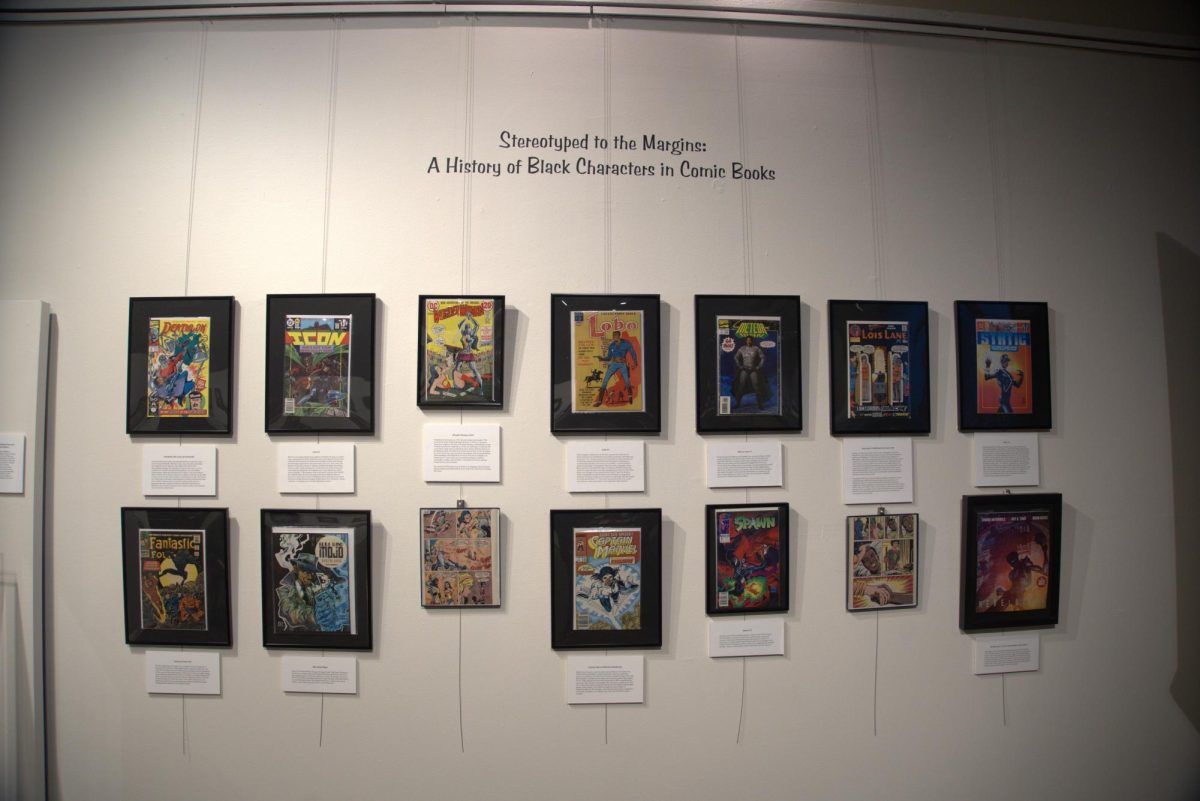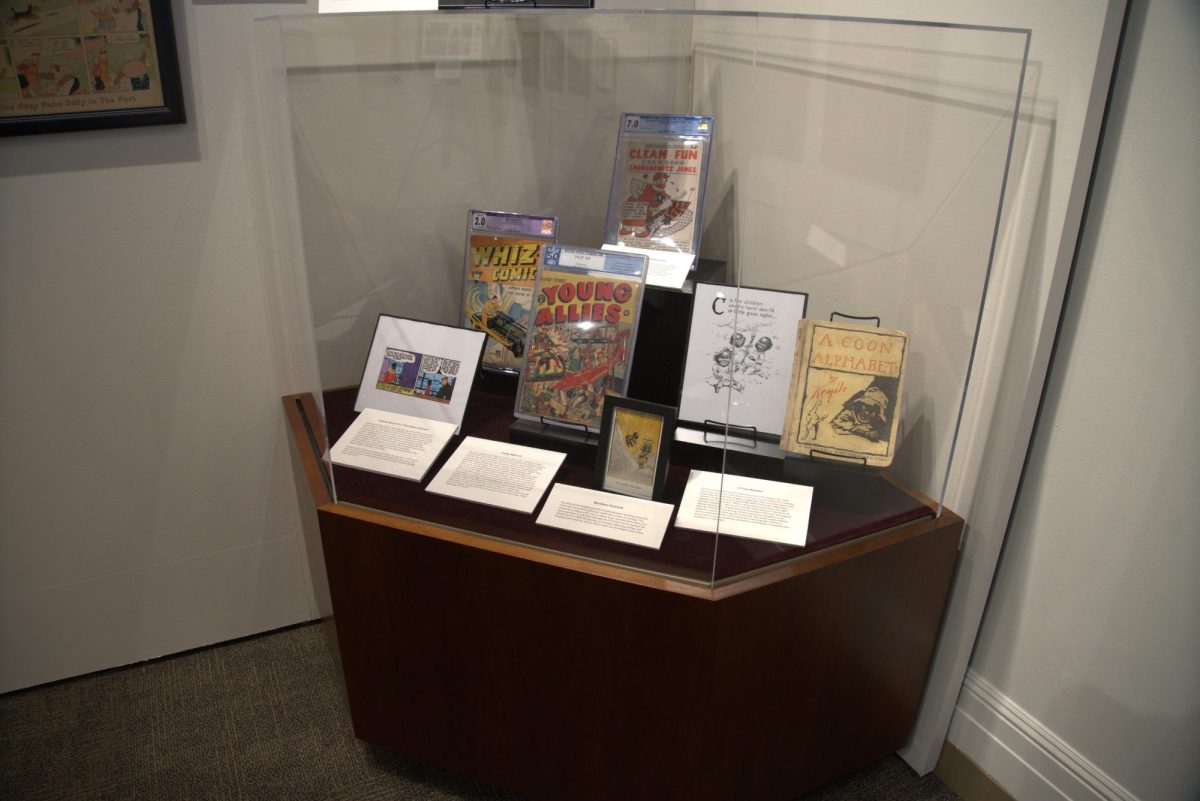For Santa Rosa Junior College’s Black History Month, drawn Black characters leap from the pages of over 100 years of comic books in the exhibit, “Stereotyped to the Margins” from 10 a.m. to 3 p.m. Feb. 3 through March 14 at the SRJC Multicultural Museum.
SRJC English instructor Dr. Eric Atkinson created the exhibit from his collection.
It features a variety of comics from the early 1900s to the modern day, focusing on the evolution of Black characters over the last century.
With everything from racist caricatures from the late 1800s, to recent fan favorites, like Static Shock and Black Panther, the displays complement the comics with plaques that explain the history behind them, as well as a breakdown of why some are accurate or positive portrayals, and why others fall short or miss the mark.
Atkinson hopes that by showcasing both good and bad representation, he can allow people to be more critical and appreciative of it in the media they enjoy, as well as more aware of the effect it has.
“I would love for people to come with questions, or come away with questions, or come away with a sense of curiosity and do their own research,” Dr. Atkinson said. “Most of this stuff is kind of hidden history, stuff we’ve chosen to forget.”
Some highlights include “Superman vs. Muhammad Ali,” the first issue of “Lobo,” which is the first comic with an African American protagonist, and a piece by George Herriman, a Black comic creator who’s foundational style would go on to inspire future works like “Felix the Cat” and “Peanuts.”
“He [George Herriman] was so influential, and so good that people tended to quote-unquote ‘overlook’ his racial designations because he ultimately ended up influencing Charles Schulz of Santa Rosa fame, Bill Watterson, everybody who came after him,” Atkinson said.
At the reception on Feb. 3, Atkinson spoke of the importance of appreciating art for reasons other than nostalgia, and celebrating things that break free of homogeneity.
Attendees ranged from Atkinson’s students to members of the greater SRJC community.
Gabriel, 19, said, “There were a couple of superheroes I didn’t know had Black counterparts, like Wonder Woman. I would recommend this to anyone who really loves comics in general, because there’s a lot of good finds up in here.”
SRJC student Juan Olvera said this is the first time he had heard of “The Superman and Muhammad Ali” comic, and thought it was “pretty cool.”
Rachel Minor, the museum curator and director, said the exhibit was valuable to help viewers see outside the common media messages toward Black people and understand how multiculturalism is oppressed, when it should be celebrated.
She said the pieces hit her viscerally on different levels.
“There’s the really bad, like the alphabet book, that one’s a lot cringe, like horrific,” she said.
Minor also felt the pieces were powerful in showing how African Americans are at rewriting their own story, with her favorite being “Naomi.”
“I love the picture and she just feels super powerful, so it’s just that dichotomy that I love,” she said.






